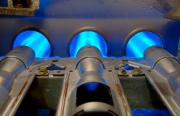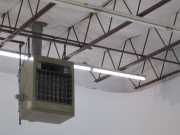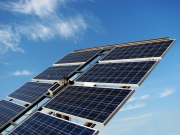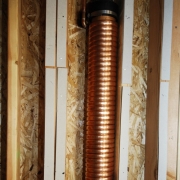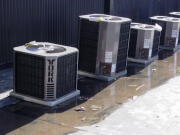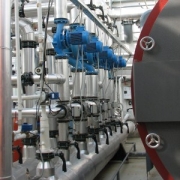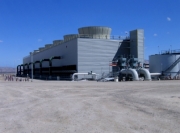- Error
{Re}habitat
Learn how adaptive reuse and upcycling can add hip design to your home, apartment, or yard with the Go Green channel's {Re}habitat series. Follow host Rachael Ranney as she shows you how to repurpose salvaged and found materials, adding fun and function to your space without breaking your budget.

This topic covers information related to fuel fired furnaces installed during construction. Fuel fired furnaces heat air moving past combustion created by an ignition and fuel source. The major components of a fuel fired furnace include burners, a heat exchanger, draft inducer, vent, blower, control and safety devices. Fuel sources for fuel fired furnaces include; natural gas, liquefied petroleum gas, oil, coal or wood.
This topic covers information related to fuel fired heaters installed during construction. Fuel fired heaters are self contained, automated heaters that serve areas where a central furnace does not exist.
This topic covers information related to solar energy heating equipment installed during construction. Solar energy heating utilizes equipment to collect and convert radiant light and heat from the sun into usable heat and energy. Solar heating equipment is powered by solar energy and consists of solar collectors, pumps, fans and ducts for distribution of warmed air.
This topic covers information related to heat exchangers installed as part of HVAC systems during construction. Heat exchangers are used to transfer heat from one medium to another. Media may include steam, air, water or other liquid.
This topic covers information related to central cooling equipment installed as part of HVAC systems during construction. Central cooling equipment conditions the air by removing heat and moisture through refrigeration and evaporation. Central cooling equipment or an air conditioner is installed in conjunction with a furnace or air handler.
This topic covers information related to water chillers installed during construction. Packaged water chillers cool water or refrigerant for use in cooling a buildings environment and/or equipment. Water chillers can be one of several types; absorption, centrifugal, reciprocating, scroll or rotary-screw.
This topic covers information related to cooling towers installed during construction. Cooling towers remove heat from water or refrigerant and can be one of several types; forced-draft, natural-draft, field-erected or liquid coolers. They work in conjunction with chillers, heat pumps and condensers.
This topic covers information related to thermal storage systems installed during construction. Thermal storage equipment stores thermal energy in the form of heat from solar collectors and works in conjunction with a chilled water system to store chilled water and ice. They allow a heating or cooling system to operate more efficiently by storing heating/cooling energy for future use.
